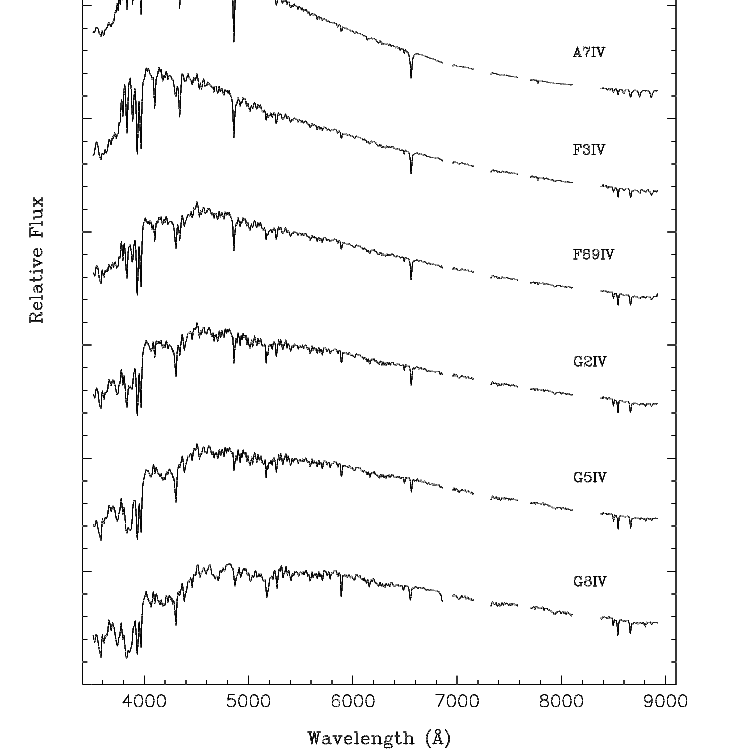
Pickering & Fleming (1890s) developed a system based on the strength of the Balmer lines of hydrogens, with A stars being the having the strongest Balmer lines.
Annie Jump Cannon (1901) rearranged the sequence (into what we now recognize as a temperature sequence), and added subdivisions (0-9). This is called the Harvard classification scheme, and from hottest to coolest stars it runs
OBAFGKM
also known as "Oh Be A Fine Girl/Guy, Kiss Me" (yeah, that's right, I'm teaching the politically incorrect version...).
How would the color of stars change along this sequence?
The line strengths change due to the temperature effects on
Here are examples of how spectral lines change along the sequence from F through G stars. (See also Figs 8.2 & 8.3 from your text.)

We can also determine the luminosity
class based on the spectral lines:
|
|
|
|
|
|
|
|
|
|
|
|
|
|
|
|
|
|
|
|
|
Under this scheme, the sun is a G2V
star.